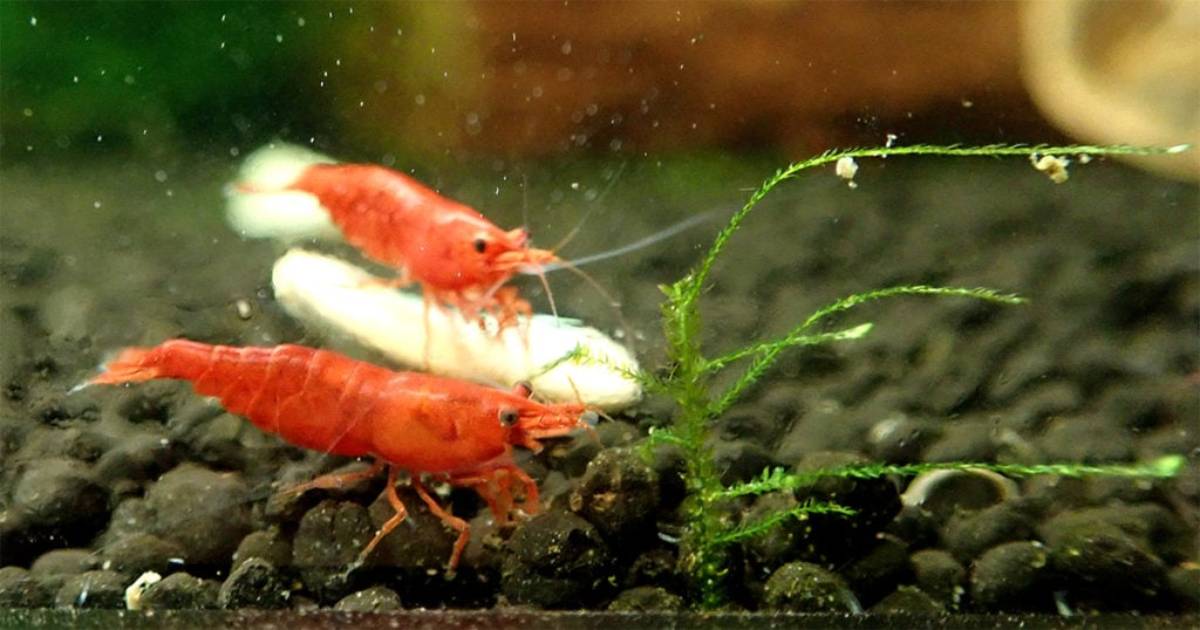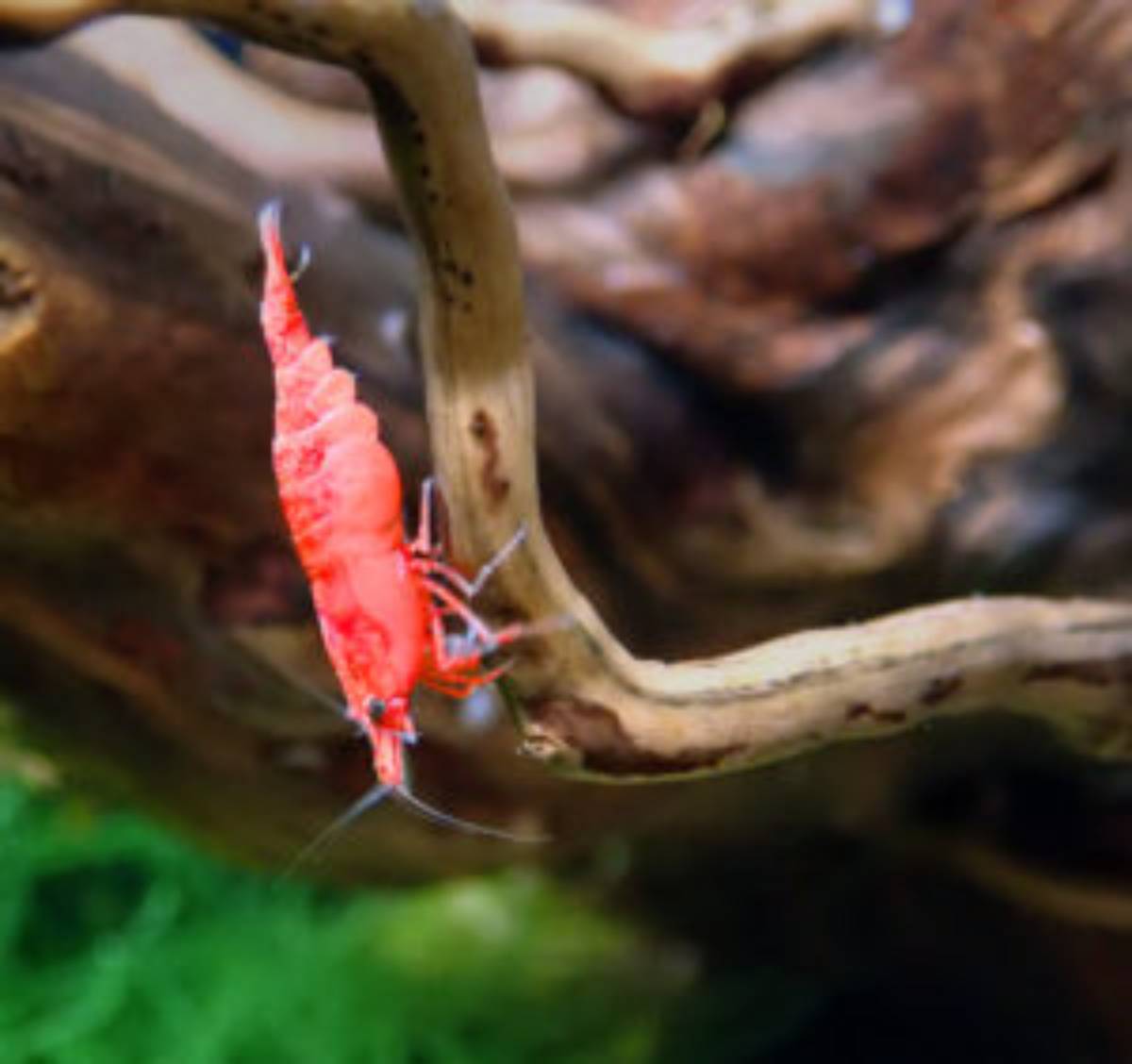Josh's Frogs
Keeping and Breeding Cherry Shrimp
 Shrimp are something most of us associate with cocktail sauce, but did you know that many colorful species of freshwater shrimp are now routinely kept and bred for the pet trade? These communal crustaceans are easy to keep - many species are ideal for nano tanks (small tanks under 5 gallons, often kept on desks, in apartments, etc). They pair well with live plants, making for a low maintenance inhabitants in a low maintenance planted tank, perfect for someone with a busy or hectic schedule.
Shrimp are something most of us associate with cocktail sauce, but did you know that many colorful species of freshwater shrimp are now routinely kept and bred for the pet trade? These communal crustaceans are easy to keep - many species are ideal for nano tanks (small tanks under 5 gallons, often kept on desks, in apartments, etc). They pair well with live plants, making for a low maintenance inhabitants in a low maintenance planted tank, perfect for someone with a busy or hectic schedule.
What's up with all the colors?
Many of the freshwater shrimp in the aquarium trade, such as cherry shrimp or bee shrimp, show striking colors and patterns. These not only serve to indicate different species or populations - these shrimp have been heavily line bred to make them brighter over several generations. Most species are native to Asia, This guide will focus on cherry shrimp - those bright red shrimp that are one of the most commonly available (and inexpensive!) freshwater ornamental shrimp. These shrimp are generally solid red, and come in varying degrees of quality. In fact, many of these lines are actually graded by the coverage and richness of their red color!Background Information
Cherry shrimp are small (about 1.25"" when fully grown) freshwater shrimp originally from Taiwan, although they are commonly kept and bred across the globe. They are a peaceful, communal species that thrives in a simple planted tank. If cared for properly, adults can typically live 1-2 years.Housing
Cherry shrimp are not picky - in fact, it can be easy to overdo it and love them to death! They prefer well oxygenated, slow moving water, making a sponge filter ideal. This filtration system also has the benefit of not sucking up baby shrimp. If using a power filter, make sure that there is a quality sponge filter over the intake to avoid reducing the shrimp population in your new tank!Plants
Planted tanks are a must, as the shrimp will graze on the surface biofilm that develops over anything in the aquarium - live plant leaves are ideal for this. In order to breed, shrimp also need a lot of cover, which plants do a great job of providing. For substrate, any of the shrimp or plant specific substrates make a great choice. Java moss is a great fit for Cherry shrimp, and it'll provide a lot of cover for them to graze and reproduce in. Cherry shrimp have a need for minerals to stay healthy, and many of the plant/shrimp substrates are already mineral rich and ready to go right out of the bag.Shrimp are not picky about temperatures; in fact, they thrive at room temperature (72-74F). Unless your temps routinely dip below 68F, I would avoid using an aquarium heater. Keeping Cherry shrimp above 76F or so increases their mortality and shortens their expected lifespan. With most aquarium heaters preset to 78F, you need to be careful! A separate aquarium thermometer should always be used to monitor water temperature.Water needs to be dechlorinated, with a slightly acidic to slightly basic pH (ideally 6.5-7.5). The tank must be cycled before introducing shrimp. These invertebrates are very sensitive to ammonia and nitrite, so be sure to set up and cycle your tank before introducing shrimp.Cherry shrimp do great in groups with each other - I have a 40 gallon behind my desk with hundreds of them in it! As long as conditions are right and food is present, they are a very peaceful, easy to care for species.Diet
Cherry shrimp diet is pretty easy. In the wild, they are scavengers and will eat pretty much anything. In the aquarium, they'll spend a lot of time consuming biofilm - that thin layer of algae and bacteria that grows over pretty much any surface, and is responsible for that slimy/slick feeling on anything kept in an aquarium for any length of time. This should be supplemented with a shrimp/crustacean specific pelleted food (commonly available from most major fish brands now), as well as occasional vegetables. When feeding vegetables, make sure to blanch them. This involves boiling them in water so the cell walls are broken down, making the plant material easier for the shrimp to consume. Food should be offered daily, especially when keeping Cherry Shrimp in high density.Shrimp Friends
Many of us want to keep more than just shrimp. Fortunately, they do well with most other small, peaceful aquatic species. Snails in particular are a good fit - so much so that I'd say they're pretty much mandatory to house with shrimp. Snails do a great job of cleaning up the food that shrimp miss, and don't really interact with shrimp in any way. I keep several different varieties of ramshorn snails in with my shrimp, and they're almost as fun to watch!When it comes to other fish, be careful when choosing which species to pick. Almost any fish will be hard pressed to not eat a baby cherry shrimp when given the chance, so keep this in mind if your goal is to breed your shrimp. Providing plenty of cover in the form of java moss will allow some baby shrimp to reach maturity in the presence of all but the most dedicated shrimp eaters. Fish that spend most of their time in the upper half of the water column are ideal - shrimp rarely venture off of the substrate or plants. Small tetras or livebearers make great choices. For an extra hand keeping the tank clean, cory cats or otocinclus (aka o-cats or otto cats) make great tank companions.Breeding Cherry Shrimp
If you have cherry shrimp of both sexes, you'd be hard pressed not to breed them. Cherry shrimp mature fast - a female is ready to have babies in 4-6 months. I rarely see the shrimp breed, but often noticed females that are ""berried"" - a cluster of small, round eggs is visible under the tail. The female will carry the eggs around for about a month, until small, transparent baby shrimp hatch out and spread out across the aquarium. They'll feast on the same foods that the adults will, and will need plenty of cover to feel comfortable and avoid being eaten by fish. They also are easily sucked up into a filter, so once again make sure to use a sponge filter or cover over the power filter intake.Baby cherry shrimp will quickly grow, becoming more red and translucent as they age. At 4-5 months, they have typically reached at least 1"" in size and are ready to start breeding on their own.Conclusion 
Are you looking for interesting inhabitants for a nano or desktop tank, or just looking for an aquatic critter that's a bit different? Cherry shrimp may be the right pets for you! These small, colorful, ornamental crustaceans have exploded in popularity over the past several years, and are quickly becoming mainstream. If you have a planted tank that needs a bit of color, or just want a low maintenance pet that reproduces easily, make sure to consider cherry shrimp.Topics in this Blog
None

